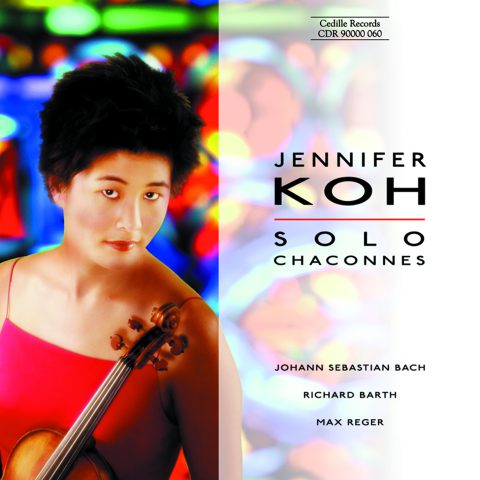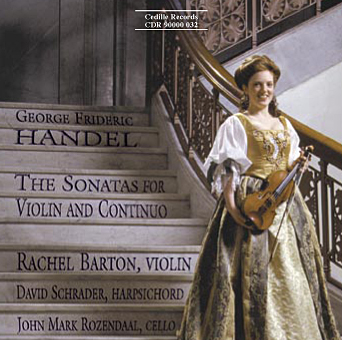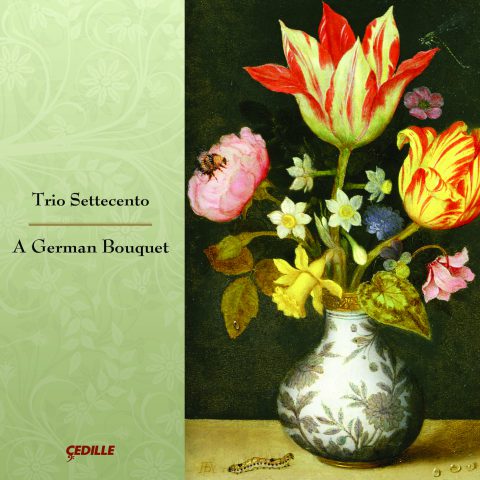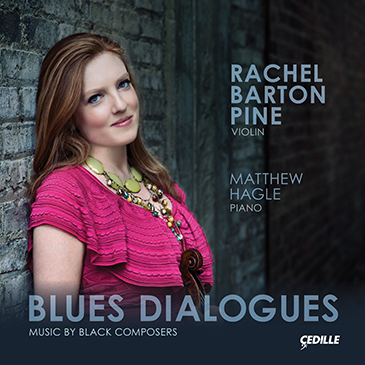| Subtotal | $18.00 |
|---|---|
| Tax | $1.85 |
| Total | $19.85 |
Store
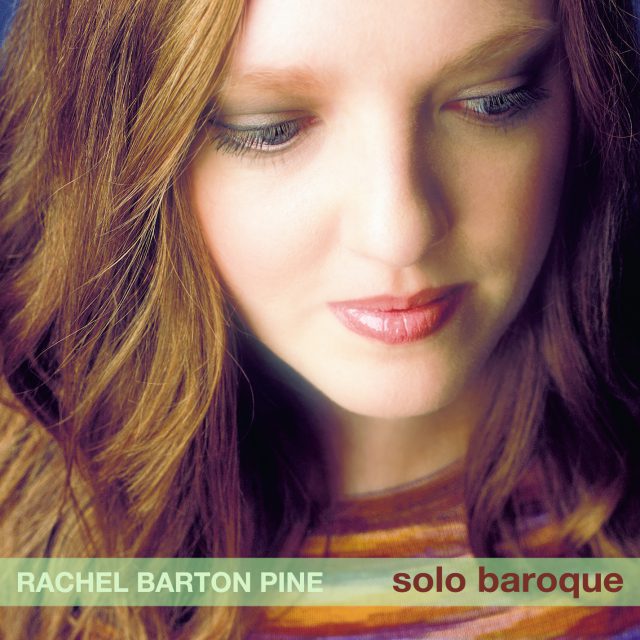
The music of Bach has a special place in my heart. I grew up in a liberal Protestant United Church of Christ congregation whose motto was Making a Joyful Sound in the City. The sanctuary included Bach among the many religious figures featured in its stained glass windows. In this setting, I first encountered his glorious music. Our organist/choirmaster, Sam Hill, would often play a Bach Toccata and Fugue as the prelude or lead the choir in a movement from a Bach Oratorio as an anthem. When I was four years old, Sam invited me to perform in public for the first time. I played a Bach Minuet during a worship service. Throughout the remainder of my student years, I frequently performed Bach’s music in my church. Playing his music is always a spiritual experience for me.
Bach’s sense of faith was deep and central to his being. He signed his manuscripts Soli deo Gloria, to the glory of God. Musicologist Helga Theone has recently suggested that Christian symbolism, mathematic and thematic, is hidden both in individual movements and in the set of Six Sonatas and Partitas as a whole. While fascinating, the argument is ultimately academic. Bach recognized that his musical talents were a gift from God and he employed them in God’s service. I believe that Bach’s spirituality is inseparable from his music, whether sacred or secular.
While browsing in a local sheet music store at the age of 14, I discovered an edition of the Corelli Sonatas with “Corelli’s own ornamentation” as notated by an audience member. Fascinated by the implications, I sought out an early-music specialist to learn more. I studied the important primary and secondary sources on baroque performance practice, including Geminiani, Quantz, C.P.E. Bach, and Boyden. I began using a baroque bow, exploring historically informed phrasing and articulation, and writing my own ornamentation. Over the years, I have sought out opportunities to discuss, read, and occasionally perform early music with experts including Sigiswald Kuijken, Anner Bylsma, Marilyn McDonald, David Douglass, Elizabeth Wright, John Mark Rozendaal, and David Schrader. My ideas about the sound, phrasing, and interpretation of baroque repertoire have evolved dramatically over the past fifteen years. On this recording, I have attempted to capture my most recent thoughts about and understanding of the music of the late 17th and early 18th centuries.
My fascination with research and with deserving yet underperformed repertoire led me to investigate unusual unaccompanied baroque repertoire for the violin. My music collection quickly expanded to include Telemann’s Fantasies, Playford’s Division Violin, Mateis’s Ayrs, and Roman’s Assaggi. I became especially intrigued by the Westhoff Suites as obvious precursors to Bach. The Biber Passacaglia and Pisendel Sonata became part of my rotating recital repertoire.
In 1999, I was invited to give a performance of Bach’s Six Sonatas and Partitas, along with pieces for unaccompanied violin that preceded them, in a marathon recital at Oberlin Conservatory. I chose to include the Biber, the Pisendel, and a Westhoff Suite. Studying these works simultaneously taught me a great deal about the traditions from which Bach emerged and how he transcended them. For this recording, I included Bach’s first Sonata as the closest link to the pieces that preceded it. I chose the D Minor Partita to highlight the connection between Bach’s Ciaccona and Biber’s Passacaglia. I hope that you will enjoy reacquainting yourself with Bach’s genius in the context of several baroque masterpieces with which you may not yet be familiar.
Preview Excerpts
JOHANN SEBASTIAN BACH (1685-1750)
Sonata No. 1 in G Minor, BWV 1001
JOHANN PAUL VON WESTHOFF (1656-1705)
Suite II in A Major
HEINRICH IGNAZ FRANZ VON BIBER (1664-1704)
JOHANN GEORG PISENDEL (1687-1755)
Sonata in A minor for unaccompanied violin
J.S. BACH
Partita No. 2 in D Minor, BWV 1004
Artists
Program Notes
Download Album BookletGerman Polyphonic Baroque Music for Unaccompanied Violin: The Bach Sonatas and Partitas and Their Predecessors
Notes by Rachel Barton Pine
The coming of a new millennium prompted widespread interest in assessing, debating, and cataloguing the previous thousand years of human achievements. Johann Sebastian Bach’s contributions were almost universally acknowledged and celebrated as among the most significant and profound. His compositions have served as a foundation and source of inspiration for composers from Mendelssohn to Brahms to Schoenberg.
Bach’s contrapuntal writing, in particular, continues to set the standard by which any musical composition is judged. Among the greatest examples of his mastery of counterpoint, the Six Sonatas and Partitas for unaccompanied violin are a cornerstone of every violinist’s study and repertoire. Moreover, their contribution to music theory and composition curricula throughout the world engraves them in the collective consciousness of every serious classical musician.
We often perceive the Six Sonatas and Partitas as a miraculous experiment that sprang entirely from Bach’s imagination. In fact, at the time he wrote these masterpieces, there was nearly a century-old tradition of German polyphonic (multiple part) writing for unaccompanied violin. The most important examples of this tradition illustrate the influences on Bach and offer insight into how he transcended what came before to fulfill the ultimate potential of the genre. In view of their wonderful appeal to performer, listener, and researcher, many of these compositions deserve greater recognition.
Most of the great instrumentalists of the 17th and 18th centuries were skilled in extemporaneous playing. There are many references to complex polyphonic improvisations by German violinists. The works that were written down represent only a sampling of the creative output for unaccompanied violin during this period. In fact, much of the repertoire that has survived appears to be records of improvisations or compositions that evolved out of the improvisatory process.
The advanced technique of German violinists of the Baroque Period probably explains why the polyphonic complexity they achieved was unequalled by composers from any other country. Around the middle of the 17th century, German violinist-composers began pushing the boundaries of violin technique far beyond the standards established by the early 17th-century Italians Biagio Marini and Carlo Farina. Thomas Baltzar, and later Heinrich Ignaz Franz von Biber, Johann Paul von Westhoff, and Johann Jakob Walther, were widely considered the leading German violinists of their generations. Walther’s Scherzi (1676) and Hortulus Chelicus (1688) offer a virtual catalogue of their technical innovations, particularly in the areas of extended range, double stops and chords, special bowings, and descriptive effects.
The first known experiments in composition for unaccompanied violin were written by German violinists: Johann Schop’s Praeludium (published in 1646), the movements in the Breslau manuscript (c.1640-1650), and the Two Preludes and Allemande of Schop’s student Baltzar (published after his death in 1663). Their expanding technical capabilities allowed them to create increasingly more complex repertoire. As violinist-composers began to conceive of the violin as more than essentially a melodic instrument, they often drew from the body of repertoire for unaccompanied viola da gamba. The extraordinary manuscript collection from this time, GB-Ob Mus. Sch. F.573, contains dozens of dance movements for unaccompanied violin, most of which are transcriptions of pieces for viol. In these works, polyphony is emphasized through many devices including imitation, suspension, appoggiatura, passing-tone, pedal, and auxiliary notes.
Heinrich Ignaz Franz von Biber‘s (1644-1704) Passacaglia in G minor (spelled “Passagalia” in the only surviving, non-autograph presentation manuscript) is the largest-scale single movement known for unaccompanied violin prior to Bach’s Ciaccona. The work is the last of a collection of sixteen pieces that were probably written for the rosary devotions often associated with the Feast of the Guardian Angel. The date of composition is estimated to be between 1670 and 1674, shortly after Biber became director of music to the Prince-Archbishop of Salzburg (a post Biber held until his death). Each of the first fifteen pieces is a sonata written for violin and continuo inspired by a mystery of the rosary. Each uses a different tuning of the open strings to create special resonances. The Passacaglia, which returns to the standard tuning, is prefaced by a drawing depicting the Guardian Angel leading a child by the hand.
The Passacaglia is constructed around a four-note progression: G, F, E-flat, D, the first line of the hymn to the Guardian Angel “Einen Engel Gott mir geben.” The violin provides its own continuous bass consisting of 65 repetitions of these four notes. The first 30 statements of the bass occur at a low pitch, the next 15 are an octave higher, and the last 20 return to the lower octave. Many variations extend over multiple repetitions of the bass notes. Biber’s inventive piece showcases almost the entire range of then-contemporary techniques for the violin: complicated double- and triple-stopping, large string crosses, broken octaves, fanciful virtuoso passage work, burls, arpeggiated figures, springing bowings, and positions as high as the seventh. However, as with Bach’s compositions, there is nothing superficial about the result. Biber places all of his effects at the service of the musical intent, with an outcome that is both dramatic and spiritual.
Biber’s collection of “rosary” sonatas was never printed and was not widely circulated in his day. Therefore, it is unlikely that Bach would have been familiar with Biber’s Passacaglia. Nevertheless, Biber’s Passacaglia, in the magnificence of its conception, the exploitation of the unaccompanied violin in the form of variations on a ground, and the success of the musical result, can be considered the precursor of Bach’s Ciaccona.
Johann Paul von Westhoff‘s (1656-1705) Six Suites, rediscovered in the early 1970s, represent the only known collection of multiple multi-movement works for unaccompanied violin before Bach. Westhoff published the Suites in Dresden in 1696, while serving as a member of the Dresden Hofkapelle. Each Suite uses the same traditional sequence of dance movements: allemande, courante, sarabande, and gigue. The movements of each Suite are in the same key and in standard binary (two-part) form, with the first section cadencing on the dominant. Westhoff notated the Suites in a unique way, using eight staffs, treble clef for the upper two strings and alto clef for the lower two. The Six Suites represent the most extreme polyphonic writing for unaccompanied violin prior to Bach.
The Suite No. 2 in A major (not to be confused with Westhoff’s earlier Suite in A major, published in 1682), is one of the simplest in the collection, yet one of the most immediately appealing. In contrast to the rhythmic patterns of the first half of the Allemande, the second half consists almost entirely of bariolage. The Courante is notable for its extended passages of consecutive thirds. The Sarabande is one of Westhoff’s more lyrical. The energetic Gigue uses three voices in a quasi-fugal sequence and numerous three-note chords.
Despite their relatively conservative formal structure, Westhoff’s Suites are quite imaginative. However, Bach’s works far surpass them in realizing the contrapuntal and musical potential of the unaccompanied violin. Unlike the Westhoff Suites, each of Bach’s Partitas uses a different sequence of dance movements. Their harmonic patterns are more complex, allowing him to extend the length of his movements. While Westhoff mostly relies on continuous chords as a polyphonic tool, Bach often implies polyphony in single-line passages and movements.
Bach writes out ornamentation for many of his slower movements. Comparison of the Sarabanda from Bach’s D minor Partita with those by Westhoff is illuminating. If not for Bach’s ornamentation, his Sarabanda would look very similar to Westhoff’s series of chordal progressions. Clearly, Westhoff’s Sarabandes were not meant to be played without the addition of tasteful embellishments.
The young Bach was employed briefly as a violinist in Weimar in 1703 where an aging Westhoff was serving as chamber secretary, chamber musician, and teacher of French and Italian at the town’s Court and Chapel. It is very likely that the two met and that Bach was familiar with Westhoff’s compositions.
Johann Georg Pisendel (1687-1755) was the foremost German violinist of the first half of the 18th century. Vivaldi, Albinoni, and Telemann all dedicated works to him. In his famous treastise, Quantz wrote about Pisendel’s influential work as leader-concertmaster of the court orchestra at Dresden.
Pisendel’s technical mastery is documented clearly in his Sonata in A minor for unaccompanied violin, written in 1716 or 1717 during a period of extensive European touring. The technical demands are far more advanced than anything previously written for unaccompanied violin. The Allegro and Giga feature flying staccato. The Giga also demands double-stops in intervals up to and including the tenth. Ease in the higher positions is assumed.
The Sonata is longer and less chordally dense than Westhoff’s Suites. It mixes aspects of Italian rhythm and melody with serious German counterpoint. The formal scheme is unusual, neither a church sonata nor a dance suite. The first movement is untitled, but is clearly in a slow tempo. Richly ornamented, all of the embellishments are fully written out. The chord changes are occasionally quite startling, and the effect is at turns rhapsodic and declamatory. Lombardic rhythm (short-long) is used in all three movements and in extended passages in the second movement. The Allegro and Giga are in binary form. Written mostly in a single voice, the Allegro is not polyphonically complex but exhibits spirited character and numerous rhythmic contrasts. The Giga and Variation are in counterpoint for two voices, with interesting examples of contrary motion. The Variation is essentially a double, an embellished version of the original movement that follows its harmonic outline. In combining the Giga and its double, I have followed the suggestion of my friend Christopher Verrette, a violinist in Canada’s Tafelmusik Baroque Orchestra.
Pisendel and Bach spent time together in Weimar in 1709 and continued to exchange music after they parted. The two likely met in Dresden in 1717, shortly after Pisendel finished his Sonata and probably just before Bach began writing his. Pisendel returned to Dresden from Italy on September 27th and Bach left the city in early October. During his touring, Pisendel had briefly studied with Vivaldi. Bach’s strong attraction to Vivaldi’s music suggests he would have been especially interested in Pisendel’s recent composition. It is interesting to note that Bach’s first Partita, the only one in which he follows his movements with doubles, substitutes a Bourée and Double for the expected Gigue and Double. Perhaps this substitution was made out of respect for the final two movements of Pisendel’s Sonata.
The autograph manuscript of the Six Sonatas and Partitas by Johann Sebastian Bach (1685-1750) is dated 1720. Scholars believe he began writing these pieces during the end of his service to the Duke of Weimar, possibly during his brief imprisonment in November of 1717 for seeking to leave the Duke’s employ. Bach probably continued work on the Sonatas and Partitas after entering the service of Prince Leopold of Anhalt-Cöthen, a period without church duties in which he completed much of his celebrated chamber and instrumental music. The Sonatas are in the Italian “church sonata” form: slow, fast, slow, fast. The first and second movements are in the style of preludes and fugues, the melodic third movements are in contrasting keys, and the last movements imply multiple voices within a single line. The Partitas (spelled “Partia” in the manuscript) are suites of dance movements. It is clear that Bach’s Six Sonatas and Partitas were conceived as a cycle. Each Sonata is followed by a Partita. Each Sonata’s fugue is longer and more complex than the previous one’s, and the movements of the Partitas increase in number from 4 to 5 to 6.
Bach’s Sonata in G minor begins with an Adagio in ABA form. The taste and inventiveness of Bach’s ornamentation is especially evident when the outer sections are compared. The embellishments of the same material are almost entirely different. The Fuga contrasts three-voiced contrapuntal sections in multiple-stops and idiomatic homophonic passagework with implied counterpoint. The section of broken chords in the middle and the organ-like ending, both over a pedal point of D, are especially noteworthy. The delicate Siciliana simulates the texture of a trio sonata, with two treble voices in duet and an accompanying bass line. The Presto, in binary form, is full of complex inner rhythms and is an impressive example of polyphony hidden in a single-line movement.
Bach’s Partita in D minor begins with the four standard movements of the dance suite. The Allemanda, Corrente, and Giga contain primarily single line writing. Each movement is in binary form, with the addition of an especially beautiful single-voiced coda at the end of the chordal Sarabanda. The opening chord patterns and serious character of these movements prepare the way for the mighty Ciaccona. The Ciaccona, thirty-four variations on an eight-bar descending chromatic bass line, is in three-part form: minor-major-minor. The ground is frequently changed to allow for more varied treatment. This movement goes through an enormous range of emotions and sonorities. Despite its grandeur, the character of the dance is never entirely absent. For many generations, it has been considered the benchmark of a violinist’s interpretative ability and has often been performed as a stand-alone piece.
While Bach is remembered mainly as a keyboard virtuoso, the violin was his first instrument. His first professional position was as a violinist, and he was employed as concertmaster in Weimar before moving to Cöthen. It is likely that Bach played his three unaccompanied violin sonatas himself during communions at the Thomaskirche in Leipzig. While Bach’s Sonatas and Partitas do not include many of the advanced virtuoso techniques employed by Pisendel, they are technically challenging for both left and right hands. In fact, Pisendel is the only other violinist who is thought to have played them during Bach’s lifetime. There are accounts of Pisendel playing four-part fugues during masses in the Dresden chapel, though whether these were Bach’s or his own improvisations is unknown. Perhaps in reference to Pisendel, C.P.E. Bach wrote to his father’s biographer, Johann Nicholaus Forkel: “One of the greatest violinists told me once that he had seen nothing more perfect for learning to be a good violinist… than the said violin solos without bass.”
About the Violin
I was fortunate to have had the opportunity to record this music on a 1770 Nicola Gagliano in unaltered baroque condition. The instrument is strung with gut strings tuned to A=415. I chose this violin partly from a desire for greater authenticity, but mainly because this instrument and setup bring me closest to the concept of sound that I envision for my interpretations of this repertoire.
Album Details
Total Time: 73:73
Producers: Rachel Barton Pine, Gregory Pine, James Ginsburg
Engineer: Bill Maylone
Graphic Design: Melanie Germond and Pete Goldlust
Cover photo: Andrew Eccles
Recorded: January 29-30 and February 1, 2004 at WFMT, Chicago
Microphones: Schoeps MK21 and Neumann KM184
Luthier (violin technician): Whitney Osterud
© 2004 Cedille Records/Cedille Chicago
CDR 90000 078
